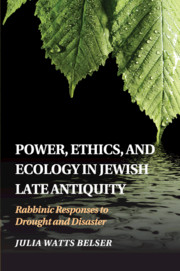Book contents
- Power, Ethics, and Ecology in Jewish Late AntiquityRabbinic Responses to Drought and Disaster
- Power, Ethics, and Ecology in Jewish Late Antiquity
- Copyright page
- Dedication
- Contents
- Book part
- Introduction
- Encountering the Bavli
- 1 Covenantal Ecology and the Discourse of Natural Signs
- 2 Discerning Divine Favor
- 3 Merit in the Midst of Danger
- 4 Charismaand Ritual Fasting for the Sake of Rain
- 5 Confusing the Fathers
- 6 Hiddennessand Holiness
- Conclusion: Power and Perception in Bavli Taʿanit
- Bibliography
- Subject Index
- Index of Ancient Sources
- References
Bibliography
Published online by Cambridge University Press: 05 August 2015
- Power, Ethics, and Ecology in Jewish Late AntiquityRabbinic Responses to Drought and Disaster
- Power, Ethics, and Ecology in Jewish Late Antiquity
- Copyright page
- Dedication
- Contents
- Book part
- Introduction
- Encountering the Bavli
- 1 Covenantal Ecology and the Discourse of Natural Signs
- 2 Discerning Divine Favor
- 3 Merit in the Midst of Danger
- 4 Charismaand Ritual Fasting for the Sake of Rain
- 5 Confusing the Fathers
- 6 Hiddennessand Holiness
- Conclusion: Power and Perception in Bavli Taʿanit
- Bibliography
- Subject Index
- Index of Ancient Sources
- References
- Type
- Chapter
- Information
- Power, Ethics, and Ecology in Jewish Late AntiquityRabbinic Responses to Drought and Disaster, pp. 217 - 230Publisher: Cambridge University PressPrint publication year: 2015



